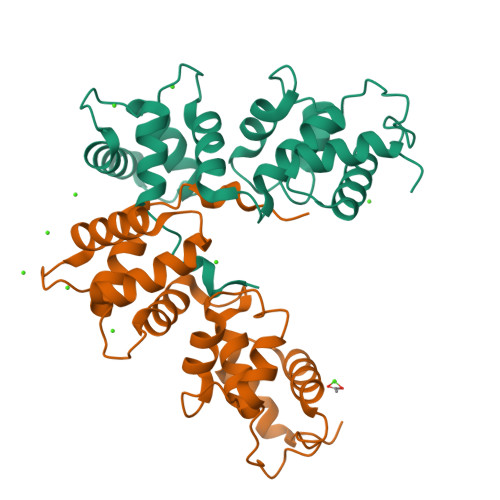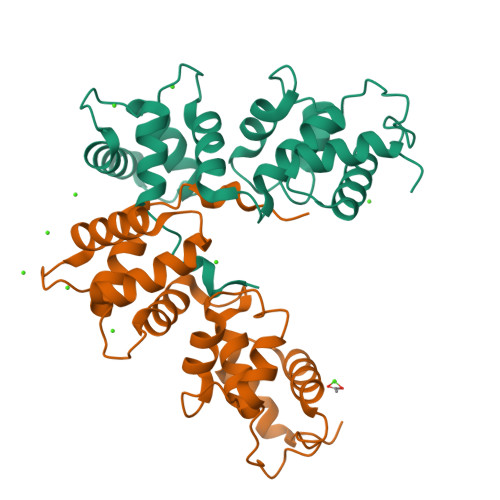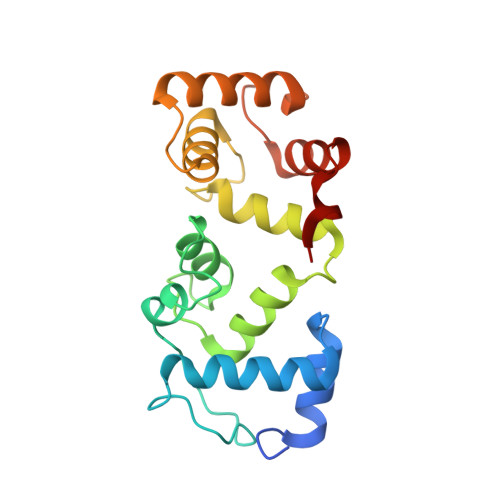CIB2 and CIB3 are auxiliary subunits of the mechanotransduction channel of hair cells.
Liang, X., Qiu, X., Dionne, G., Cunningham, C.L., Pucak, M.L., Peng, G., Kim, Y.H., Lauer, A., Shapiro, L., Muller, U.(2021) Neuron 109: 2131-2149.e15
- PubMed: 34089643
- DOI: https://doi.org/10.1016/j.neuron.2021.05.007
- Primary Citation of Related Structures:
6WU5, 6WU7, 6WUD - PubMed Abstract:
CIB2 is a Ca 2+ - and Mg 2+ -binding protein essential for mechanoelectrical transduction (MET) by cochlear hair cells, but not by vestibular hair cells that co-express CIB2 and CIB3. Here, we show that in cochlear hair cells, CIB3 can functionally substitute for CIB2. Using X-ray crystallography, we demonstrate that CIB2 and CIB3 are structurally similar to KChIP proteins, auxiliary subunits of voltage-gated K v 4 channels. CIB2 and CIB3 bind to TMC1/2 through a domain in TMC1/2 flanked by transmembrane domains 2 and 3. The co-crystal structure of the CIB-binding domain in TMC1 with CIB3 reveals that interactions are mediated through a conserved CIB hydrophobic groove, similar to KChIP1 binding of K v 4. Functional studies in mice show that CIB2 regulates TMC1/2 localization and function in hair cells, processes that are affected by deafness-causing CIB2 mutations. We conclude that CIB2 and CIB3 are MET channel auxiliary subunits with striking similarity to K v 4 channel auxiliary subunits.
Organizational Affiliation:
The Solomon H. Snyder Department of Neuroscience, Johns Hopkins University School of Medicine, Baltimore, MD 21205, USA.




















